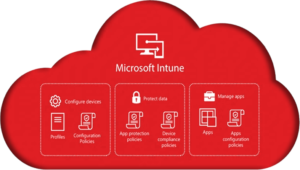If you are moving your organization to Windows 10, you should consider also making the switch from BIOS to UEFI. Unfortunately, this switch cannot be totally automated, so it will take some planning. You can get close, and I will go over how in this post.
Why switch?
Simply put, BIOS is old technology. UEFI is much more secure with features such as Secure Boot. You can also make better use of GPT partitions with UEFI. UEFI also boots much faster, because of how it handles memory, hardware, and peripherals.
With a computer configured with UEFI, an SSD, and Windows 10, you should be able to get to your desktop very quickly (some manufacturers say less than 10 seconds on new models). This is all due to how UEFI handles the hardware, most internal and external.
Microsoft built Windows 10 for UEFI, not BIOS. That should be enough for you consider switching. BIOS is only going to become more of a problem for you in the future.
Switching to UEFI (semi-automatically)
This process will require two task sequences and manual intervention. There seems to be no way to do this without manual intervention. The first task sequence will set your computer to UEFI. Dell, Lenovo, and HP all have command line tools to programmatically change the boot setting. I primary work with Dell’s, so I will list their commands as a reference. These commands will NOT work for Lenovo or HP.
For a Dell machine, install Dell Command | Configure on a reference machine. Copy the X86_64 folder from the installation directory to your ConfigMgr content share. Create a package (not application) from this folder. Add a “Run Command Line” step to your task sequence that looks like this:
If your BIOS is password protected, add “–valsetuppwd <password>” to the end of the command. Be sure to notice the double-dash marks. Now reboot your computer and kick off your Windows 10 image task sequence.
You can always set the computer to UEFI manually in the BIOS, or add a simply batch file to your boot media instead of creating a task sequence for this. The only danger is that the machine still needs to be rebooted to make the UEFI switch. If you don’t restart after the switch, ConfigMgr will not see the boot setup as UEFI.
Disclaimer
All content provided on this blog is for information purposes only. Windows Management Experts, Inc makes no representation as to accuracy or completeness of any information on this site. Windows Management Experts, Inc will not be liable for any errors or omission in this information nor for the availability of this information. It is highly recommended that you consult one of our technical consultants, should you need any further assistance.





